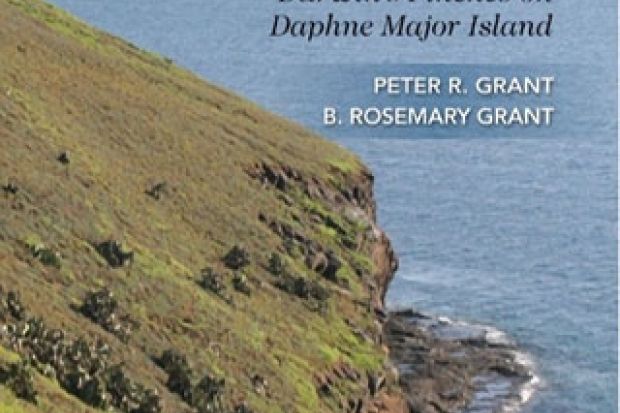In the grand scheme of things, 40 years is nothing, especially when you are dealing with evolution. But in terms of scientific research, a single study that lasts 40 years is exceptional. And the study described here is truly exceptional. Peter and Rosemary Grant, Britons based at Princeton University, have devoted their careers to the study of the group of birds known as Darwin’s finches on the Galapagos archipelago, one of the most isolated and inhospitable places on Earth. But the payoff is that their research furnishes some of the most compelling evidence for natural selection and the origin of species.
Darwin visited the Galapagos in 1835 and collected specimens of the sparrow-sized birds he saw there. It wasn’t until he returned home and discussed the birds’ size and bill shape with John Gould, an ornithologist at the British Museum, that he began to appreciate their significance. The differences between species and between finches on different islands provided him with the seeds of natural selection, which came to fruition 24 years later in On the Origin of Species.
Standing on Darwin’s shoulders in 1939, University of Oxford ornithologist David Lack made a detailed study of the Galapagos finch species. He speculated that competition for food – mainly seeds – drove evolution and accounted for the differences in beak size between species. Lack also realised that the pristine, isolated environment of the Galapagos was a natural laboratory ideal for seeing natural selection in action.
This was the Grants’ starting point when conducting their first field season in 1973, and their results were remarkable confirmation of Lack’s ideas. The key was studying the birds over successive years and being on the Galapagos to witness the effects of drought – not just once, but several times over the years. Drought meant fewer seeds, and following each drought they could see differential mortality, mediated by competition for food, followed by a marked difference in body and beak size. Evolution in action.
This is the Grants’ fourth book on Darwin’s finches. It focuses on the results of studying species through time, but also provides an inspirational account of how scientists take advantage of unusual occurrences. Prior to the Grants’ study, hybridisation between species was considered biologically unimportant. Noticing hybrids between finch species, the Grants followed them relentlessly through time, and eventually showed that hybridisation and introgression are important aspects of the speciation process.
One of the things that jumps out from this nicely produced book is the disproportionate value of long-term studies – and, by inference, the folly of grant-awarding bodies that invariably provide funds for just three or five years. It is only if you have been directly involved that you know how much effort is needed to keep such a study going. The Grants’ achievement is monumental.
What happens when, after 40 years of research, academics are forced to retire? I asked the Grants, who replied that because funding is so uncertain, so too is the future of their study. Is it too much to hope that grant-awarding bodies recognise and support the disproportionate value of long-term studies such as theirs?
40 Years of Evolution: Darwin’s Finches on Daphne Major Island
By Peter R. Grant and B. Rosemary Grant
Princeton University Press, 432pp, £34.95
ISBN 9780691160467 and 9781400851300 (e-book)
Published 23 April 2014
Register to continue
Why register?
- Registration is free and only takes a moment
- Once registered, you can read 3 articles a month
- Sign up for our newsletter
Subscribe
Or subscribe for unlimited access to:
- Unlimited access to news, views, insights & reviews
- Digital editions
- Digital access to THE’s university and college rankings analysis
Already registered or a current subscriber? Login





